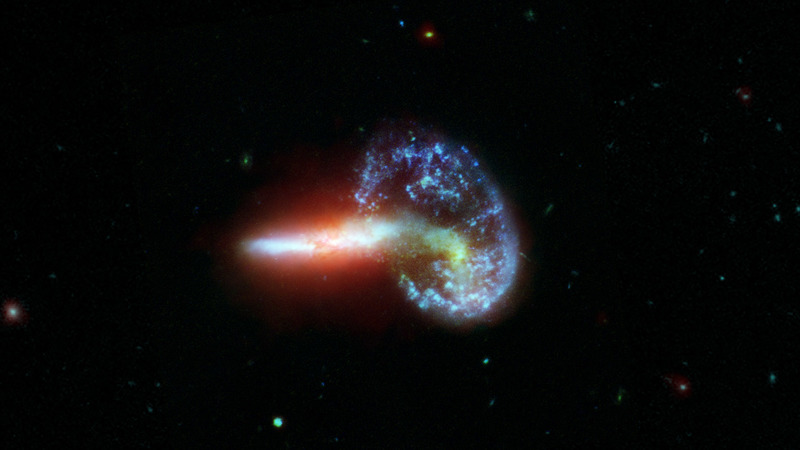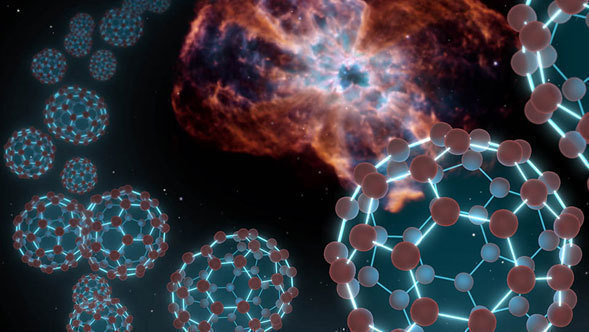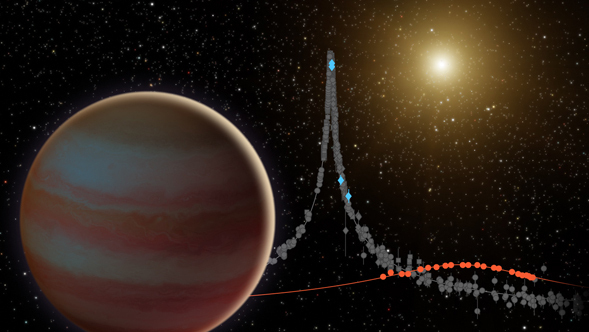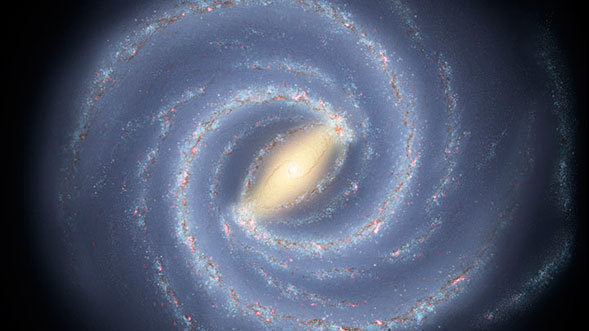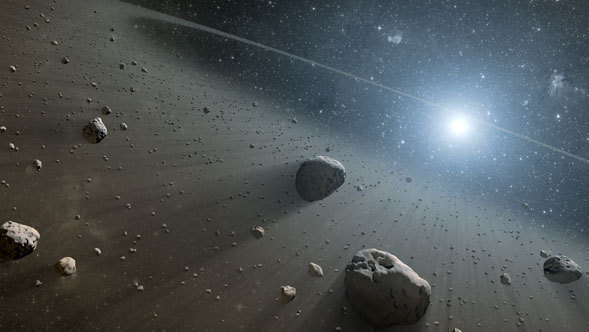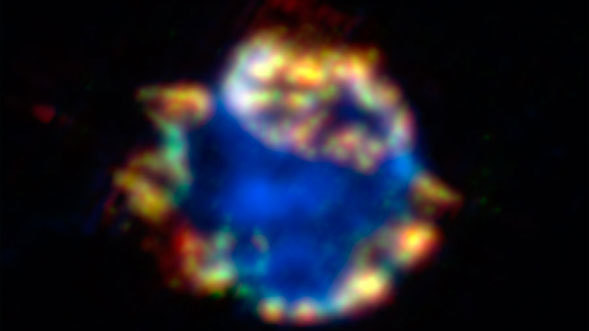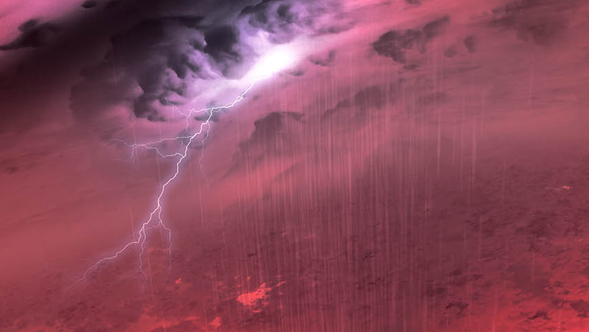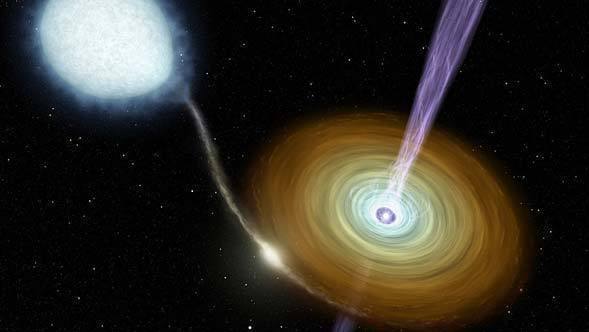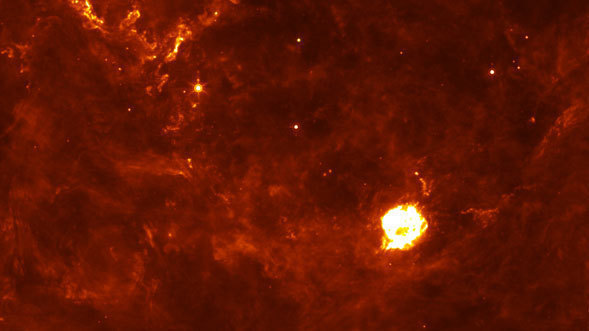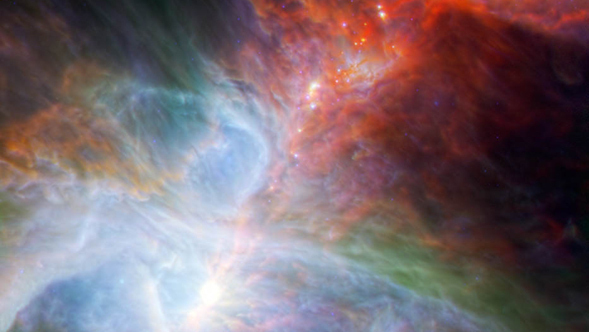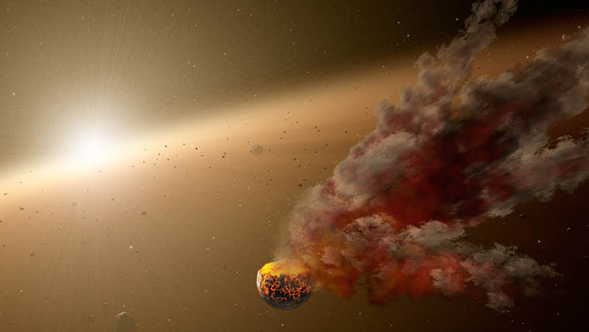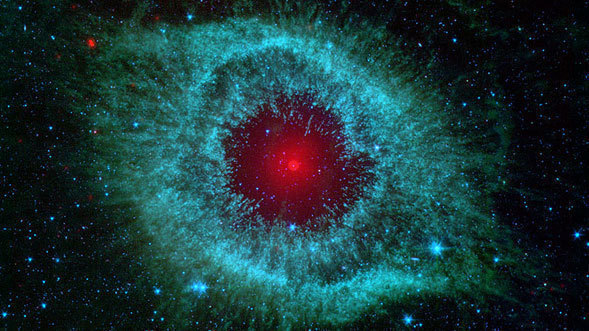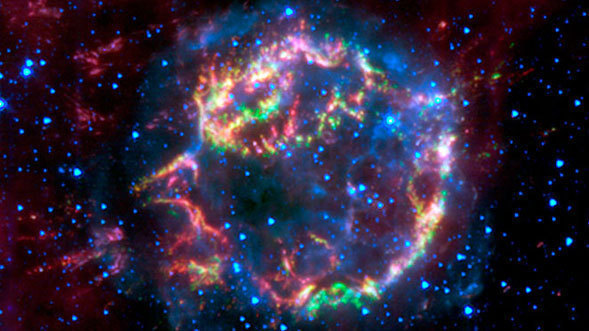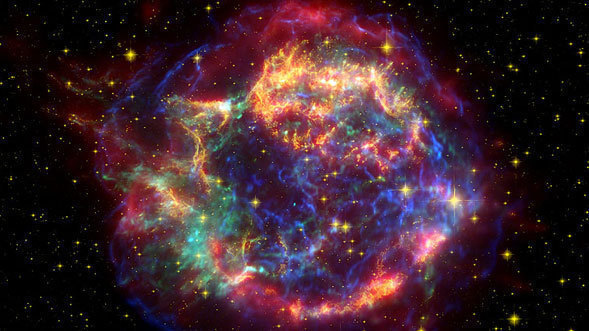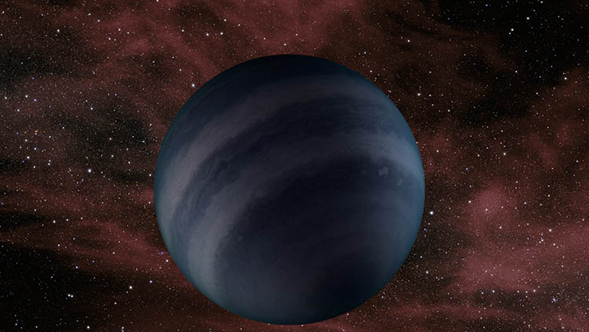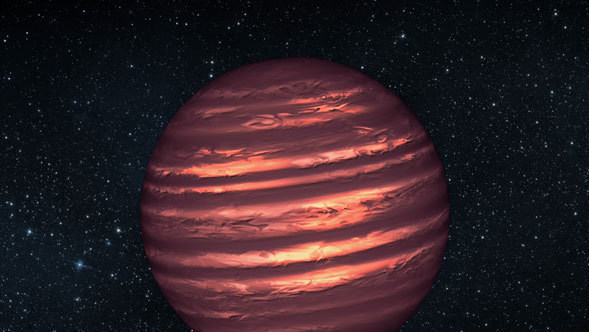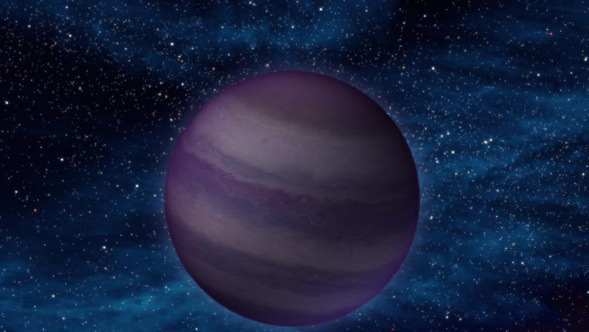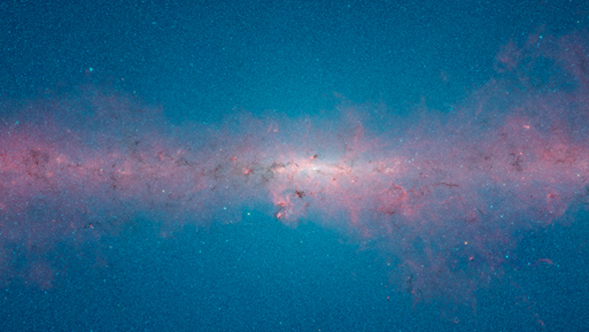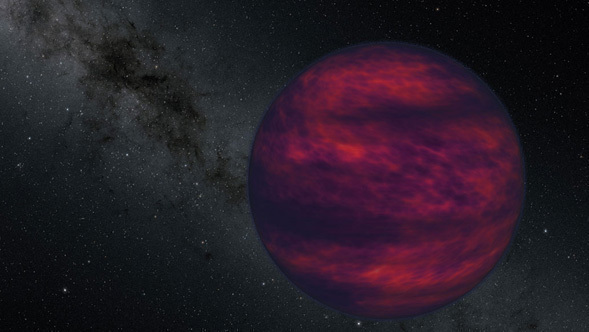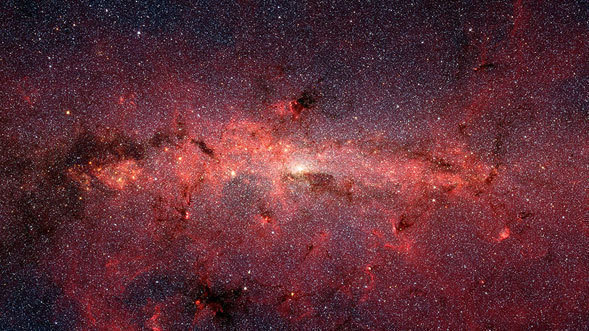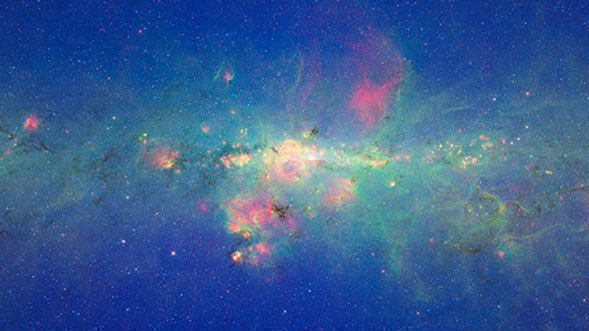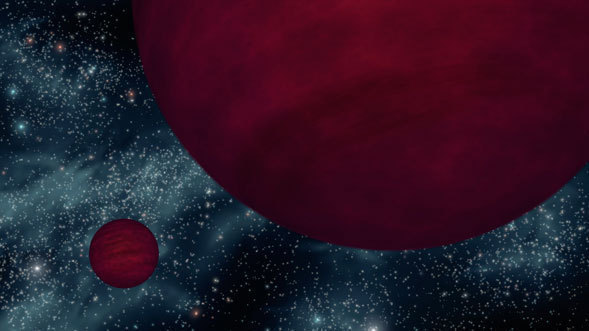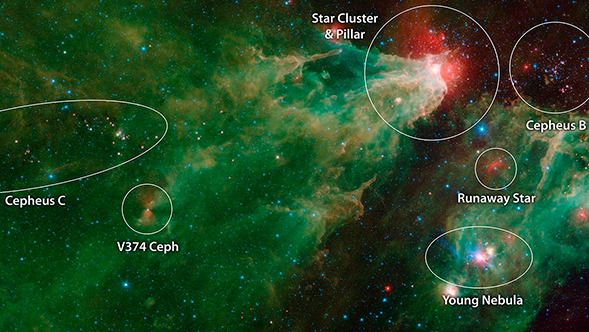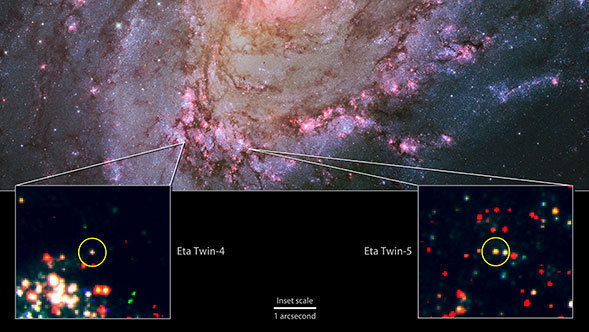Astronomy, as it name implies, is involved in the study of stars since the ancient times. The best place to find out more about these mysterious beacons of light in the sky is outside Earth's atmosphere. Further, investigating the stars is done at infrared wavelengths, where the dimming due to dust and gas surrounding the stars is minimized. The whole lifecycle of stars from birth to death is thus revealed with an infrared space telescope, such as Spitzer.
Closely connected to stars are gas and dust nebulae that often cover vast spaces between and around stars. These nebulae provide the raw material for the formation of future stars on one hand, but on the other hand they themselves consist of the remains of previous generations of stars that have blown themselves up either peacefully or in a violent manner.
Spitzer's observations have revealed previously unknown material in the interstellar space, including giant buckyball-like molecules and jets around dense stars. Spitzer has for the first time unearthed weather conditions on failed stars called brown dwarfs, pointed out hidden places of star formation in dusty interstellar cocoons, and discovered dusty relics of ancient stellar deaths.
Exploding stars generate dramatic light shows. Infrared telescopes like Spitzer can see through the haze and to give a better idea of how often these explosions occur.
Astronomers using NASA's Spitzer Space Telescope have discovered carbon molecules, known as "buckyballs," in space for the first time. Buckyballs are soccer-ball-shaped molecules that were first observed in a laboratory 25 years ago.
In a first-of-its-kind collaboration, NASA's Spitzer and Swift space telescopes joined forces to observe a microlensing event, when a distant star brightens due to the gravitational field of at least one foreground cosmic object.
New images from NASA's Spitzer Space Telescope are shedding light on the true structure of the Milky Way, revealing that it has just two major arms of stars instead of the four it was previously thought to possess.
Astronomers have discovered what appears to be a large asteroid belt around the star Vega, the second brightest star in northern night skies.
Astronomers have at last found definitive evidence that the universe's first dust -- the celestial stuff that seeded future generations of stars and planets -- was forged in the explosions of massive stars.
To the surprise of astronomers, most brown dwarfs may be roiled by massive storms.
One of the most mysterious aspects of black holes is their ability to shoot small, steady jets of matter into space near the speed of light. Until the sensitive infrared eyes of NASA's Spitzer Space Telescope recently spotted one of these jets around a nearby neutron star, or super-dense dead star, black holes were the only known objects in the universe with this "talent."
Hot spots near the shattered remains of an exploded star are echoing the blast's first moments, say scientists using data from NASA's Spitzer Space Telescope.
Astronomers have spotted young stars in the Orion nebula changing right before their eyes, thanks to the European Space Agency's Herschel Space Observatory and NASA's Spitzer Space Telescope. The colorful specks -- developing stars strung across this image -- are rapidly heating up and cooling down, speaking to the turbulent, rough-and-tumble process of reaching full stellar adulthood.
NASA's Spitzer Space Telescope has spotted an eruption of dust around a young star, possibly the result of a smashup between large asteroids. This type of collision can eventually lead to the formation of planets.
A bunch of rowdy comets are colliding and kicking up dust around a dead star, according to new observations from NASA's Spitzer Space Telescope. The dead star lies at the center of the much-photographed Helix nebula, a shimmering cloud of gas with an eerie resemblance to a giant eye.
Astronomers using NASA's infrared Spitzer Space Telescope have discovered that an exploded star, named Cassiopeia A, blew up in a somewhat orderly fashion, retaining much of its original onion-like layering.
An enormous light echo etched in the sky by a fitful dead star was spotted by the infrared eyes of NASA's Spitzer Space Telescope.
NASA's Spitzer Space Telescope has found evidence of a high-speed collision between two burgeoning planets around a young star.
Researchers are getting to know some of our sun's closest and smallest neighbors.
Astronomers using NASA's Spitzer and Hubble space telescopes have probed the stormy atmosphere of a brown dwarf, creating the most detailed "weather map" yet for this class of cool, star-like orbs. The forecast shows wind-driven, planet-sized clouds enshrouding these strange worlds.
Although we all want to think that the people we keep company with are "cool," when it comes to the cosmos, no one has a cooler companion than a star known as WD 0806-661.
Touring the Milky Way now is as easy as clicking a button with NASA's new zoomable, 360-degree mosaic presented Thursday at the TED 2014 Conference in Vancouver, Canada.
For the first time, scientists have directly measured wind speed on a brown dwarf, an object larger than Jupiter (the largest planet in our solar system) but not quite massive enough to become a star. To achieve the finding, they used a new method that could also be applied to learn about the atmospheres of gas-dominated planets outside our solar system.
A new infrared mosaic from NASA's Spitzer Space Telescope offers a stunning view of the stellar hustle and bustle that takes place at our Milky Way galaxy's center. The picture shows throngs of mostly old stars, on the order of hundreds of thousands, amid fantastically detailed clouds of glowing dust lit up by younger, massive stars.
More than 800,000 snapshots from NASA's Spitzer Space Telescope have been stitched together to create a new "coming of age" portrait of stars in our inner Milky Way galaxy.
It's a tie! The new record-holder for dimmest known star-like object in the universe goes to twin "failed" stars, or brown dwarfs, each of which shines feebly with only one millionth the light of our sun.
The evolution of stellar families - born from the same clumps of gas and dust - is just some of what's on display in this sweeping image.
A new study has found five objects with similar properties to the most luminous and massive stellar system within 10,000 light-years of Earth.
The "Christmas Tree Cluster" has been seen sporting a shiny new decoration: an ornament made of newborn stars! But like a gift-wrapped package, these newborn stars are hiding behind thick branches of cosmic dust, only revealed in this spectacular new image from NASA's Spitzer Space Telescope. Astronomers say this stellar ornament represents the best laboratory to date for studying the physics of star formation.
Astronomers have at last found inner light! Only, they didn't find it through the typical Earthly methods of meditation, exercise and therapy. Instead, the light was discovered inside our Milky Way galaxy after hours of deep self-reflection with NASA's Spitzer Space Telescope.
How many stars are currently forming in our Milky Way galaxy? How many of them are high-mass stars? These are questions a team of international astronomers will attempt to answer in a 417-hour galactic survey called MIPSGAL. Data from the project's first 200 hours of observations were just recently released to the astronomical community.
Harvard-Smithsonian Center for Astrophysics
Located 1,000 light-years from Earth in the constellation Perseus, a reflection nebula called NGC 1333 epitomizes the beautiful chaos of a dense group of stars being born. Most of the visible light from the young stars in this region is obscured by the dense, dusty cloud in which they formed. With NASA's Spitzer Space Telescope, scientists can detect the infrared light from these objects. This allows a look through the dust to gain a more detailed understanding of how stars like our sun begin their lives.
A new image from NASA's Spitzer Space Telescope reveals billowing mountains of dust ablaze with the fires of stellar youth.
Unsuspecting prey be warned! Hiding in the darkest corner of the constellation Circinus is a gigantic black widow spider waiting for its next meal. For decades, this galactic creepy crawler has remained largely invisible, cunningly escaping visible-light detection. At last, it has finally been caught by NASA's Spitzer Space Telescope's dust-piercing, infrared eyes.
University of Wisconsin, Madison
National Optical Astronomy Observatory (NOAO) scientist Dr. Steve Howell once likened a low mass star in a cataclysmic variable (CV) binary system to an aggrieved partner in a romantic relationship, that will "give, and give, and give some more until it has nothing left to give." In a CV system, the relationship taker is a dead star or, "white dwarf" (WD) which releases energy and light as it wraps itself in its partner's mass and forms a disk of material also known as an accretion disk.
